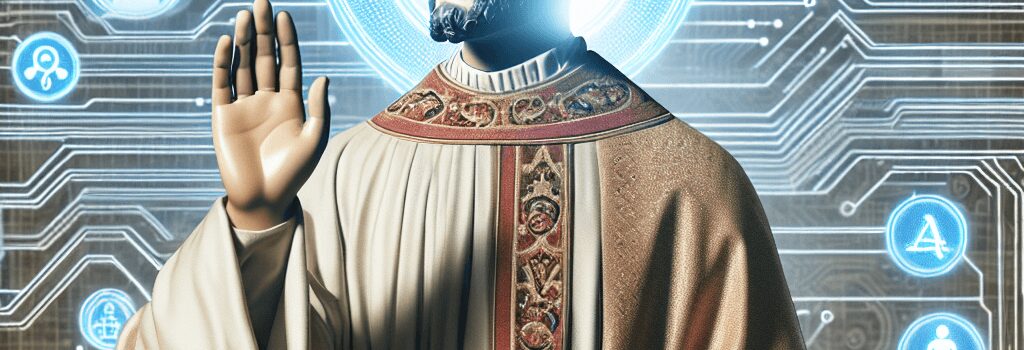Pope Leo XIV Faces AI as a New Industrial Revolution

When white smoke rose from the chimney of the Sistine Chapel on May 8, 2025, the world greeted Chicago-born Cardinal Robert Prevost as Pope Leo XIV. In his first public address from the Vatican balcony, Leo XIV explained why he chose his regnal name: to highlight the stakes of artificial intelligence for human dignity, much as his 19th-century namesake addressed the social upheavals of early industrialization.
Echoes of Rerum Novarum in the Age of Algorithms
Pope Leo XIV invoked the legacy of Leo XIII’s 1891 encyclical Rerum Novarum, which defended the rights of workers amid the Industrial Revolution’s factory horrors—16-hour workdays, dangerous machinery and rampant child labor. Leo XIII articulated principles that form the bedrock of Catholic social teaching: the inherent dignity of labor, the right to a living wage, and the moral obligation of employers to their employees.
“Just as coal-powered machinery redefined human work in the 19th century,” Leo XIV stated, “so too does artificial intelligence represent a seismic shift in our economic and social landscape. We are called to defend the dignity of every person against the dehumanizing potential of unbridled automation and algorithmic decision-making.”
Technical Implications: AI as the New Industrial Engine
- Scaling Laws and Compute: Since 2018, AI compute requirements have been doubling roughly every 3–4 months¹, enabling transformer models with hundreds of billions of parameters (e.g., GPT-4 at 1.76T parameters²).
- Edge AI and Job Displacement: On-device inference chips like NVIDIA Jetson Orin and Google’s Edge TPU permit real-time vision, speech and predictive analytics, raising concerns about automation of transport, retail and service roles.
- Generative AI in the Cloud: Services such as OpenAI’s Azure OpenAI and Google Vertex AI now integrate multimodal models into enterprise workflows—augmenting knowledge workers but also threatening to erode hundreds of thousands of data-entry and content-creation jobs.
As AI shifts from research labs into cloud platforms and on-prem data centers, Leo XIV cautioned that “the displacement of labor by digital agents mirrors the disruptive power of steam engines and assembly lines.”
Cloud Platforms and Ethical Guardrails
Major cloud providers have begun embedding ethics frameworks into their AI offerings. Microsoft’s Responsible AI Standard³ mandates fairness, reliability and safety; Google’s AI Principles emphasize human oversight; and AWS has launched an AI & ML Ethical Toolkit for customers. Still, these are voluntary and lack binding enforcement.
The Vatican’s Secretariat for the Economy is reportedly exploring a partnership with CERN researchers to assess risk in large-scale AI deployments, aiming to develop a “Moral Impact Assessment” akin to environmental impact studies required for new factories and industrial facilities.
Expert Perspectives on AI and Human Dignity
AI ethicists applaud the papal intervention. Dr. Fei-Fei Li, co-director of Stanford’s Human-Centered AI Institute, commented: “The Church’s moral voice adds gravitas to global conversations on AI governance. Recognizing AI’s dual use—from medical imaging to autonomous weapons—echoes the need for social safeguards Leo XIII championed.”
Conversely, Dr. Timnit Gebru warns that “industrial-scale data extraction and labor exploitation under the guise of ‘digital transformation’ can replicate colonialist dynamics.” She urges that any Vatican guidelines demand transparency in model training datasets and inclusive audits by workers’ representatives.
Recent Developments in AI Governance
- European Union’s AI Act (effective Q2 2025) classifies high-risk systems—including biometric identification and predictive policing—and imposes strict conformity assessments.
- In March 2025, the U.S. National Institute of Standards and Technology (NIST) released draft guidelines on Trustworthy & Responsible AI, emphasizing accountability and measuring model bias across demographic subgroups.
- G7 Summit in Hiroshima (May 2025) concluded with a joint communique urging “inclusive innovation” and support for reskilling programs to mitigate AI-driven job displacement.
Pope Leo XIV praised these efforts, yet called for an “ethical common denominator” rooted in universal human dignity.
Policy Proposals and the Road Ahead
Drawing on Catholic social teaching, Leo XIV proposed:
- Global Minimum Standards: A binding treaty for “fair AI”—guaranteeing worker redeployment programs, algorithmic transparency and collective bargaining rights in digital platforms.
- AI Education for All: Church-sponsored, open-access curricula on AI literacy, aiming to equip parish communities worldwide with the knowledge to engage policymakers.
- Labour & Automation Observatory: A Vatican initiative to monitor AI’s socioeconomic impacts, producing annual reports similar to the ILO’s World Employment and Social Outlook.
“No machine, however brilliant,” Leo XIV concluded, “can replace the sacred spark of the human person. Our task is to guide technology so it serves humanity, not subjugates it.”
Additional Resources
- Rerum Novarum (Leo XIII, 1891) – Vatican website
- EU AI Act – European Commission
- NIST AI Risk Management Framework – NIST.gov